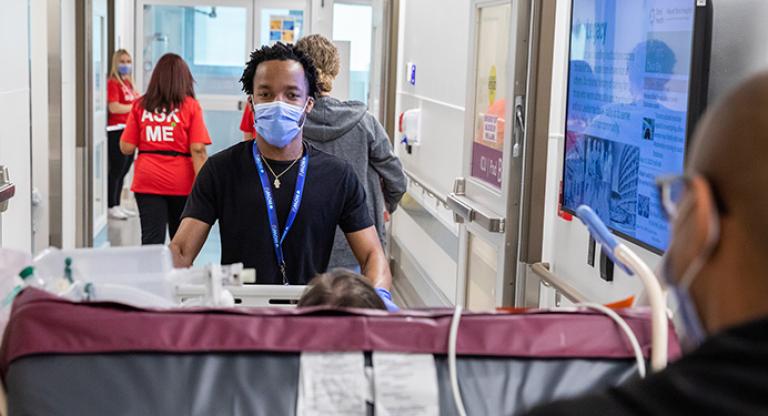Merging robotics and research to improve joint replacement outcomes

Clinical research studies have shown that up to 20 per cent of patients report they are unsatisfied with the outcomes of their total knee replacement surgery due to unmet expectations.
Now, Mount Sinai Hospital is poised to improve surgery outcomes for primary knee replacements, with its introduction of the VELYS orthopaedic robot.
A generous gift from Janice and Earle O’Born enabled the adoption of this advanced surgical technology, which will become an integral part of the Hospital’s specialized Hip and Knee Replacement Program.
Dr. David Backstein, Division Head, Orthopaedic Surgery, recently performed the Hospital’s first total knee replacement surgery using the VELYS Robotic-Assisted Solution. The robot ─ one of two in Canada ─ combines robotic surgical technology with the most modern cementless implants available for better accuracy and alignment, while reducing soft tissue disruption. For patients, this can result in less pain and a quicker recovery.
“With its precision, it can ultimately reduce operative times, get patients home faster with less soft tissue damage, and allow us to conduct more complex cases with greater accuracy,” says Dr. Backstein.
But perhaps the greatest promise for patients is the robot’s ability to capture data, and the Hospital’s plans to harness it.
Supported by the Hospital’s robust research expertise, surgical teams will use this information as a research tool to improve orthopaedics, surgical outcomes and care for patients undergoing knee replacement surgeries.
These valuable insights are expected to help lead to better outcomes and satisfaction rates for knee replacement patients in Ontario and beyond.
“Our goal is to use it not only as a clinical tool, but to improve orthopaedics and knee replacements in general, by making good use of the data. We plan to conduct research to expand its use to more complicated cases, more revision cases,” remarks Dr. Backstein. “We will be collecting data at every opportunity. The robot will allow us to correlate pre-operative, intra-operative and post-operative patient-specific data to ultimately improve outcomes. We have a very strong database for every patient; we already collect pre- and post- functional outcome measures, and we will be making great use of that with the data we collect in the operating room.”
Sinai Health is committed to embracing innovation.
“One of our major goals is to find innovative ways to use the robot. Not just what comes with the instruction manual, per se,” continues Dr. Backstein. “Our goal is to take what we have, and see how we can make it even better.
The VELYS robot joins the da Vinci robot and GTx guided therapeutics suite, as part the evolution of the Hospital’s ORs and Surgical Services Floor, a Renew Sinai redevelopment project enabling robotics through expansion, modernization, and infrastructure and equipment improvements.











